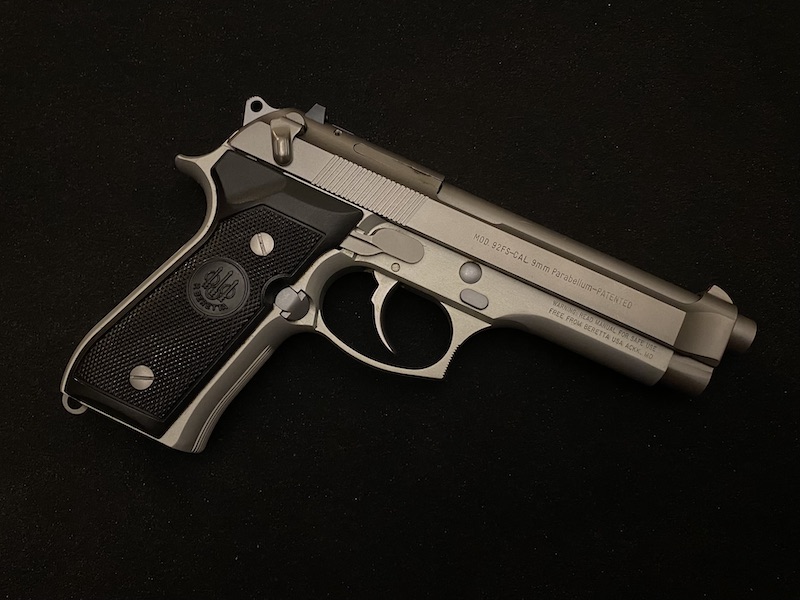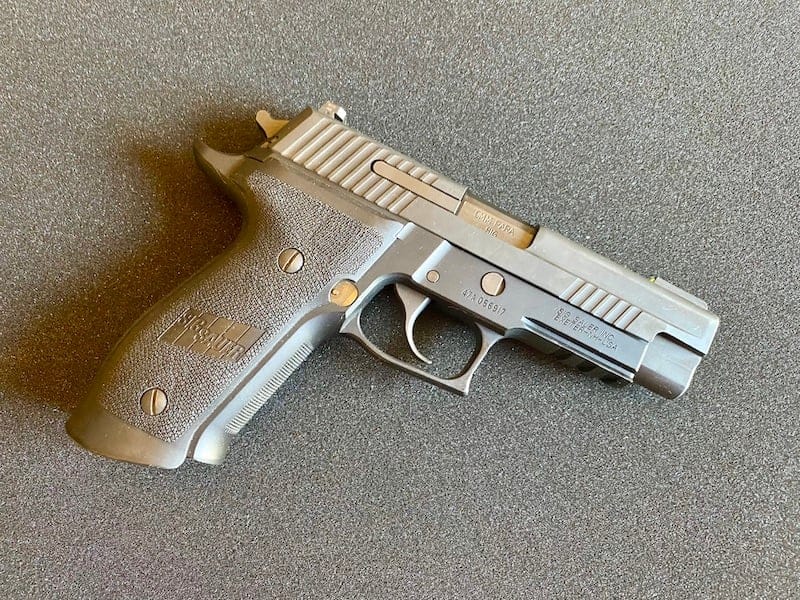While we’re here to dive deep into a head-to-head between two aluminum-framed 9mms, I’d like to start with a bit of a note about the elephant in the room. Metal is making a comeback. The current 2011 craze, alone, speaks to this—but I’m slowly gravitating toward the aftermarket frames for guns that were once proud of their plastics. And there has to be a logical reason for this. As both the Beretta 92FS and Sig Sauer P226 illustrate, metal works.
Why Aluminum Frames?
Before we get into the contrasting design elements, I’ll pay homage to the weight, balance, and tactile sophistication that comes from steel-framed and aluminum-framed guns. But steel is heavy.
The use of aluminum in the Beretta and Sig was a reaction to the steel of its predecessors. While neither of these were reacting to the 1911 (both designs are European) most of the guns of this era were made of steel. Aluminum crept in just before Glock, H&K, and others began working with plastics. Back in the 1960s, aluminum was a space age. So now, in an era when spent rocket boosters land themselves, is the new aluminum trend cutting edge or retro?
The simple fact remains. Aluminum makes sense. It is light, easy to machine, strong, and readily available.

The Beretta 92FS
The 92 line is notorious for its open slide design. The sweeping lines end on sharp curves—all very artistic. In terms of aesthetic pleasure, the Beretta will top many lists.
Yet the use of aluminum cuts down on some weight, which is balanced by the cut-out slide. The grip is wide for a 9mm. The double-stack mags fit inside the frame, which is capped by screw-on grip panels. Grip panels made sense on a 1911, as they rounded out the grip some, but the 92FS’s grips just add width in my opinion.
The sight radius is long, owing to the 5-inch barrel. There are still many aftermarket options for sights, should you not like the rather humble sights. Nonetheless, the three-dot sights are fast enough for rapid sight acquisition and accuracy isn’t a struggle.
The safety on the Beretta 92FS line is very un-American (which may seem logical for an Italian gun). The lever moves down into the safe position, and it is mounted on the slide itself. The 92G is a model with a decocker. The nicest handgun I have ever owned was a 92FS that I had converted by Wilson Combat into a 92G. It is on my list of guns that I really want back, that I shouldn’t have let go, but I did.

The double-action trigger is smooth, though the pull is long and a touch on the heavy side. After the first shot, the gun runs as a single action, though the safety will drop the hammer. For those who grew up on striker-fired guns with no external safeties, guns like the 92FS might seem antiquated. Beretta thinks otherwise, though, and continues to sink investment into changing up the product line.
There are shorter versions, distinct configurations (like the G) that function differently, new grip angles, Cerakote colors, rails, and even optics. Hard to imagine a duty gun that had no rail, but this pistol predates reliable lights. Not anymore, though. And solid 92FS magazines are readily available.
The first pistol I bought myself was a Beretta 92FS. The second pistol I bought, too, was another 92FS. I carried both IWB, OWB, and some improvised off-body holsters. I loved those guns, and the 92 I eventually took to Wilson—but the Sig P226 felt like a revelation.

The Sig P226
If you’ve shot many guns, I’ll bet you’ve had one of these moments. I was on the range with a friend who handed me his P226, and I put a few rounds on a steel target. The gun felt like an extension of my hand. I hit what I was aiming at with almost no effort—the gun pointed so well and was as stable as a table for follow-up shots.
I immediately went out a bought a P226. Still, now this is the gun I keep in my go bag, with 20-round mags, an X300, and a Safariland Level I holster. The only thing it’s missing is an optic, and I don’t miss that.
The ergonomics of this model, a Tacops P226, are better than the stock design. There’s a flared mag well. The mags hold 20 rounds. Did I mention that already? When I bought this gun, that was just about the best capacity available in a stock magazine.
The sights are tritium and also a bit more robust. The only thing missing from the gun that I should have ponied up for is a threaded barrel.
The P226 has a decocker instead of a safety. The beauty here is that the gun is always ready to go (assuming there’s a round in the chamber). Hit the decocker, and it drops the hammer, but then bounces back up, meaning it is ready, then, for a double-action pull.

The Sig P226 is still a big gun. It doesn’t feel as long as the Beretta 92FS. Realistically, I’d say they were both the same size—but the P226 feels wider and a bit shorter. Though I regularly carry a Glock 19 in my waistband, I have almost always carried the P226 OWB. It is easy enough to conceal on a large frame, so long as you have a coat tail or some other kind of intentional clothing to help hide the shape.
While there’s negligible difference in the terminal ballistic performance of these guns, and they have comparable capacity, I find people gravitate one way or the other for the ergonomics. The Beretta’s grip is more squared off. The serrations on the front and back help with grip, but the P226 uses a wrap-around grip to really fill the contours of your palm.
For all their similarities, they feel very different.
Variations on the Sig P226
Sig loves to build variations. While the P226 came along before their current craze of a new model every month, there are still numerous derivations. Like the 92FS, this was a gun in an era of transition. So rails, optics, threaded barrels—the gun has evolved over the years.
But this comes from an era when companies designed one type of duty gun and then made the same basic gun in three or four different lengths. And then they’d make the same basic families in three or four calibers. The current catalog has variations on the design in 9mm, 10mm, and .45 ACP.

What’s Old is New Again
The Sig hit the shelves in 1984, and it’s still got a devoted fan base that keep the P226 in Sig’s catalog today. I’d argue that it is still as good now as it was then.
The Beretta 92FS is about a decade older—it was designed in 1975—though the origins of the design can be traced, visibly, back to the 1930s. The 92FS feels retro to me–but that’s me.
Oddly enough, if I’d written this article five years ago, I could have made the argument that both of these guns were on their way out. The P320 had taken center stage. Beretta has tried a couple of new designs. These two felt like they’d hit middle age.
Now, though, I’m hearing a lot of buzz about the 92FS. Could it be that the old Beretta is seeing a retro resurgence? It certainly has a hipster air about it. The P226, though, feels more like a workhorse design that just won’t go away.


